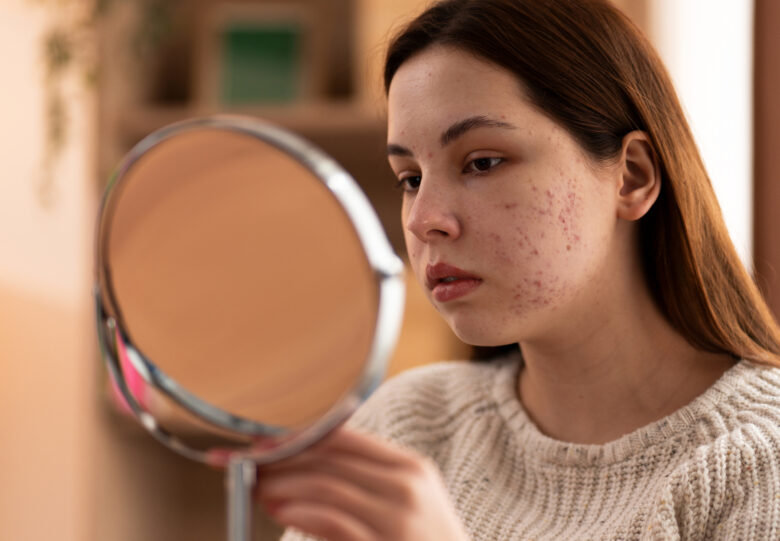Blisterata: Navigating the Challenges of a Rare Skin Condition
Welcome to the fascinating world of blisterata, a unique skin condition that deserves our attention and understanding. To embark on this journey, let’s first demystify Blisterata by exploring its definition and recognizing its importance in the vast landscape of the medical field.
Definition of Blisterata: Unraveling the Mystery
Blisterata is not just a term; it’s a medical phenomenon characterized by the formation of blisters on the skin’s surface. These blisters, often underestimated in their complexity, hold the key to a condition that impacts individuals in distinctive ways. Understanding the nuances of Blisterata is crucial for both those directly affected and the broader community.
Importance in the Medical Field: Beyond the Surface
While Blisterata might not be a household name, its significance in the medical field is undeniable. This condition provides a unique canvas for researchers, healthcare professionals, and support networks to come together. By delving into the intricacies of Blisterata, we not only gain insights into the mysteries of the skin but also contribute to advancements in medical science.
Causes of Blisterata
Understanding the origins of Blisterata requires us to explore the intricate interplay of various factors that contribute to the development of this unique skin condition.
1. Genetic Factors: Unveiling the Role of Genetics
At the core of Blisterata lies a genetic predisposition. Individuals may inherit certain genetic traits that make them more susceptible to developing this condition. Exploring family histories and genetic markers becomes crucial in understanding and addressing the roots of Blisterata.
Beyond heredity, environmental factors frequently cause blepharitia. Blisters can form as a result of exposure to certain substances, allergies, or irritants. In order to manage and avoid the onset of Blisterata, it is imperative to identify and mitigate these environmental triggers.
3. Lifestyle Influences: The Impact of Daily Choices
Our daily choices, habits, and lifestyles can significantly influence the manifestation of Blisterata. Factors such as diet, stress levels, and skincare routines play a role in either exacerbating or mitigating the condition. Recognizing and modifying lifestyle influences can be key components of a comprehensive approach to managing Blisterata.
Symptoms and Diagnosis
Embarking on the journey to comprehend and address Blisterata involves a close examination of the symptoms that manifest and the diagnostic processes that guide healthcare professionals.
1. Visible Signs: Decoding the Language of the Skin
The skin serves as a canvas that reflects the underlying complexities of Blisterata. Recognizing the visible signs is a vital step in early detection. Blisters, ranging in size and appearance, become the hallmark of this condition. Understanding the nuances of these skin manifestations empowers individuals and healthcare providers alike to identify and address Blisterata in its early stages.
2. Medical Tests: Precision in Diagnosis
Beyond the surface-level observations, medical professionals employ a variety of tests to confirm the presence of Blisterata. These tests are designed to provide a precise diagnosis, ensuring that treatment plans are tailored to the unique needs of each individual. From skin biopsies to specialized imaging, the diagnostic journey is comprehensive, aiming for accuracy and clarity.
Treatment Options
1. Topical Medications: Targeting the Surface
Topical medications form the frontline defense against Blisterata, addressing symptoms on the skin’s surface. These may include creams, ointments, or gels designed to alleviate discomfort, reduce inflammation, and promote healing. The application of these medications is often a daily ritual, providing individuals with a practical means of managing their condition.
2. Surgical Interventions: Precision in Action
In cases where Blisterata reaches a more advanced stage or poses significant challenges, surgical interventions may be recommended. Procedures such as debridement or grafting aim to address the underlying issues and promote the healing of affected areas. Surgical options are tailored to the individual’s specific needs, offering a targeted approach to managing blisters.
3. Lifestyle Changes: Holistic Management
Beyond topical and surgical interventions, lifestyle changes play a pivotal role in managing Blisterata. Dietary modifications, stress management techniques, and adjustments to daily routines can contribute to reducing the frequency and severity of flare-ups. Recognizing the impact of lifestyle choices empowers individuals to take an active role in their overall well-being.
Prevention Strategies
Navigating the landscape of Blisterata goes beyond treatment—it involves proactive measures to prevent its onset or minimize its impact.
1. Genetic Counseling: Informed Decision-Making
Understanding the genetic component of Blisterata is integral to prevention. Genetic counseling provides individuals and families with valuable insights into their genetic makeup, helping them make informed decisions. By identifying potential risk factors, individuals can work with healthcare professionals to develop personalized strategies for prevention and early intervention.
2. Environmental Modifications: Creating a Skin-Friendly Environment
Environmental factors can significantly influence the development of blisterata. Making modifications to one’s surroundings can play a pivotal role in prevention. This includes identifying and minimizing exposure to potential triggers, such as specific allergens or irritants. Creating a skin-friendly environment contributes to reducing the risk of flare-ups and promoting overall skin health.
Living with Blisterata
Living with Blisterata is a journey that extends beyond medical treatments. It involves the development of coping mechanisms and the establishment of robust support systems.
1. Coping Mechanisms: Building Resilience
Coping with the challenges posed by Blisterata requires the development of effective coping mechanisms. This involves finding strategies to manage the physical discomfort and emotional toll that often accompany the condition. From mindfulness techniques to creative outlets, individuals explore various avenues to build resilience and maintain a positive outlook despite the hurdles.
2. Support Systems: The Pillars of Well-being
The importance of a strong support system cannot be overstated in the journey with Blisterata. Family, friends, and community networks play a pivotal role in providing emotional support, understanding, and practical assistance. Connecting with others who share similar experiences through support groups fosters a sense of community, reducing feelings of isolation and empowering individuals to face challenges together.
Blisterata Research and Innovations
The field of blisterata research is dynamic, with ongoing studies and promising developments shaping the future of understanding and managing this unique skin condition.
1. Current Studies: Unraveling the Mysteries
Researchers around the globe are actively engaged in studies aimed at deepening our understanding of Blisterata. These studies delve into the genetic underpinnings, environmental factors, and the intricacies of the condition’s manifestation. By staying abreast of current studies, we gain insights that contribute to a more comprehensive understanding of Blisterata and inform future treatment strategies.
2. Promising Developments: Paving the Way Forward
In the ever-evolving landscape of medical science, promising developments in Blisterata research offer hope for improved treatments and, ultimately, a cure. Innovations may include breakthrough medications, advanced diagnostic tools, or novel therapeutic approaches. By highlighting these developments, we aim to provide individuals with Blisterata and their support networks with a glimpse into the potential future advancements that may shape their journey.
Myths and Misconceptions
In the realm of Blisterata, myths and misconceptions often abound, contributing to misinformation and misunderstanding.
1. Myth: Blisterata is Contagious
Addressing the belief: Blisterata is not contagious. Unlike some skin conditions, Blisterata is not spread through physical contact. It is essential to debunk this myth to alleviate the unnecessary fear and stigma associated with the condition. Understanding that Blisterata is not transmissible helps create a more informed and supportive community.
2. Myth: Only Older Individuals Get Blisterata
Addressing the Belief: Contrary to the misconception that Blisterata only affects older individuals, this condition can manifest at any age. While there may be cases where it becomes more prevalent with age, it is crucial to recognize that Blisterata does not discriminate based on age, and its onset can occur at various life stages.
3. Myth: Blisters Always Indicate Blisterata
Addressing the Belief: Not all blisters are indicative of Blisterata. It’s essential to understand that various skin conditions and factors can lead to blister formation. A thorough diagnosis by a healthcare professional is necessary to differentiate Blisterata from other skin-related issues.
4. Myth: There’s a One-Size-Fits-All Treatment for Blisterata
Addressing the belief: Each case of Blisterata is unique, and there is no universal treatment that applies to everyone. Tailoring treatment plans to individual needs is crucial for effective management. Consulting with healthcare professionals ensures personalized care that considers the specific factors influencing each case.









Post Comment